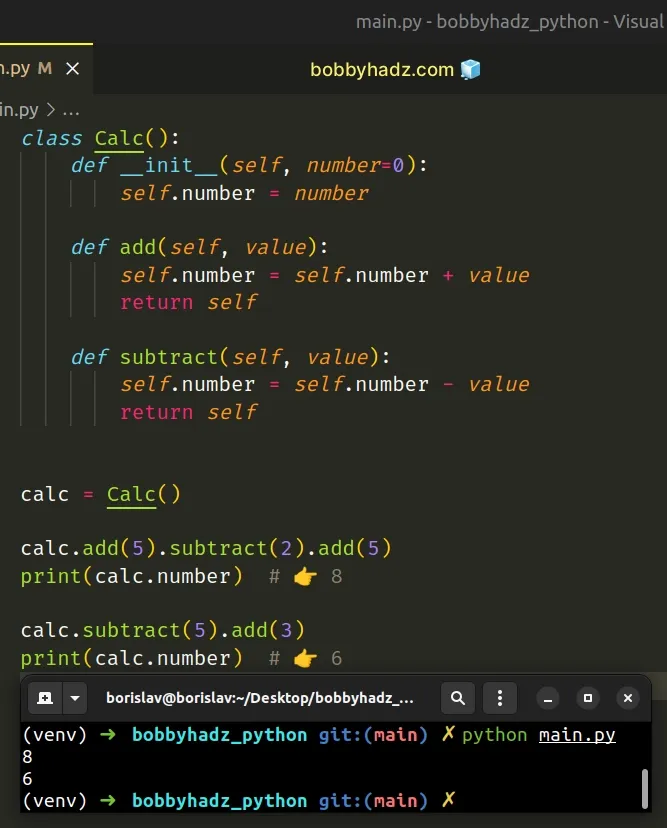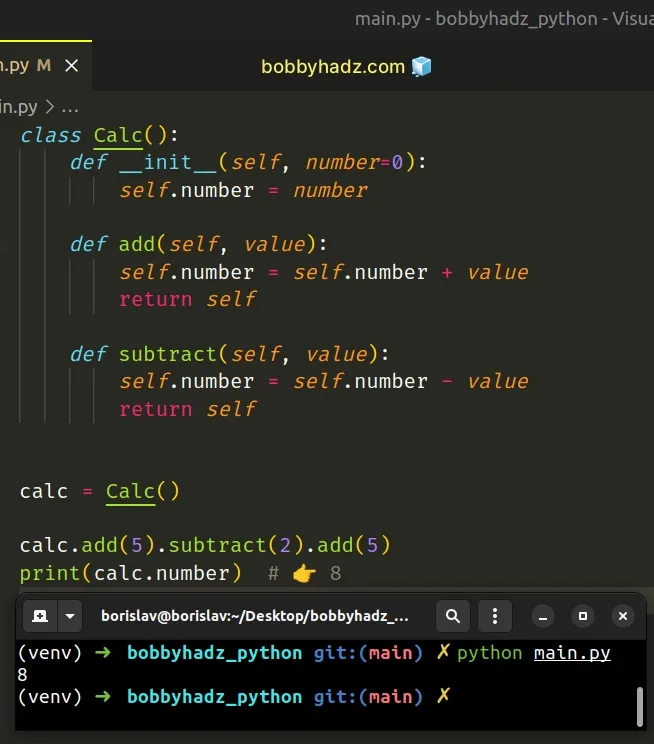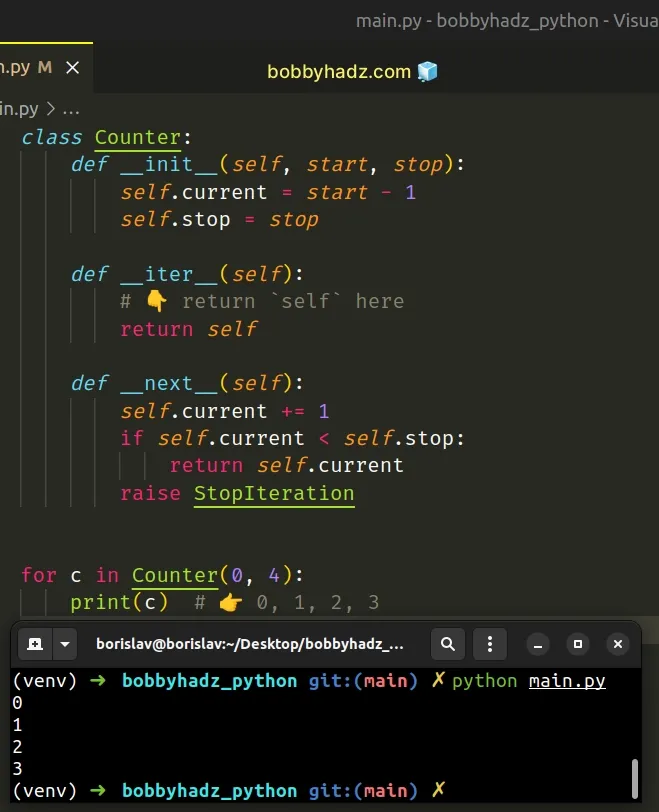Purpose of 'return self' from a class method in Python
Last updated: Apr 10, 2024
Reading time·2 min

# Purpose of 'return self' from a class method in Python
The purposes of the return self statement from a class method are:
- The ability to chain multiple calls to a method because
return selfreturns the instance object. - Using the iterator protocol, which requires us to
return selffrom the__iter__()method.
class Calc(): def __init__(self, number=0): self.number = number def add(self, value): self.number = self.number + value return self def subtract(self, value): self.number = self.number - value return self calc = Calc() calc.add(5).subtract(2).add(5) print(calc.number) # 👉️ 8 calc.subtract(5).add(3) print(calc.number) # 👉️ 6

The add and subtract methods in the Calc() class use a
return self statement.
self as the first argument to the method.self represents an instance of the class - the instance on which the method
was called.
When we return self from a class method, we basically return the instance
object.
This allows us to chain multiple calls to the method in a single statement.
# Chaining multiple calls to a method that returns self
The add() and subtract() methods return the instance, so we can chain many
calls to the methods in a single line, without storing the results in
intermediary variables.
class Calc(): def __init__(self, number=0): self.number = number def add(self, value): self.number = self.number + value return self def subtract(self, value): self.number = self.number - value return self calc = Calc() calc.add(5).subtract(2).add(5) print(calc.number) # 👉️ 8

You aren't going to see the pattern of method chaining often, but some libraries make use of it.
When you see syntax such as obj.a().a().b(), the code under the hood uses the
method chaining pattern.
However, returning self from class methods is much more common when
implementing the
iterator protocol.
The
__iter__()
method must return the iterator object itself.
Here is an example of how to make a class iterable by implementing the
__iter__() method.
class Counter: def __init__(self, start, stop): self.current = start - 1 self.stop = stop def __iter__(self): # 👇️ return `self` here return self def __next__(self): self.current += 1 if self.current < self.stop: return self.current raise StopIteration for c in Counter(0, 4): print(c) # 👉️ 0, 1, 2, 3

The __iter__() method is implicitly called at the start of loops and returns
the iterator object (self).
The __next__() method is implicitly called at each loop increment and returns
the next value.
# Additional Resources
You can learn more about the related topics by checking out the following tutorials:

